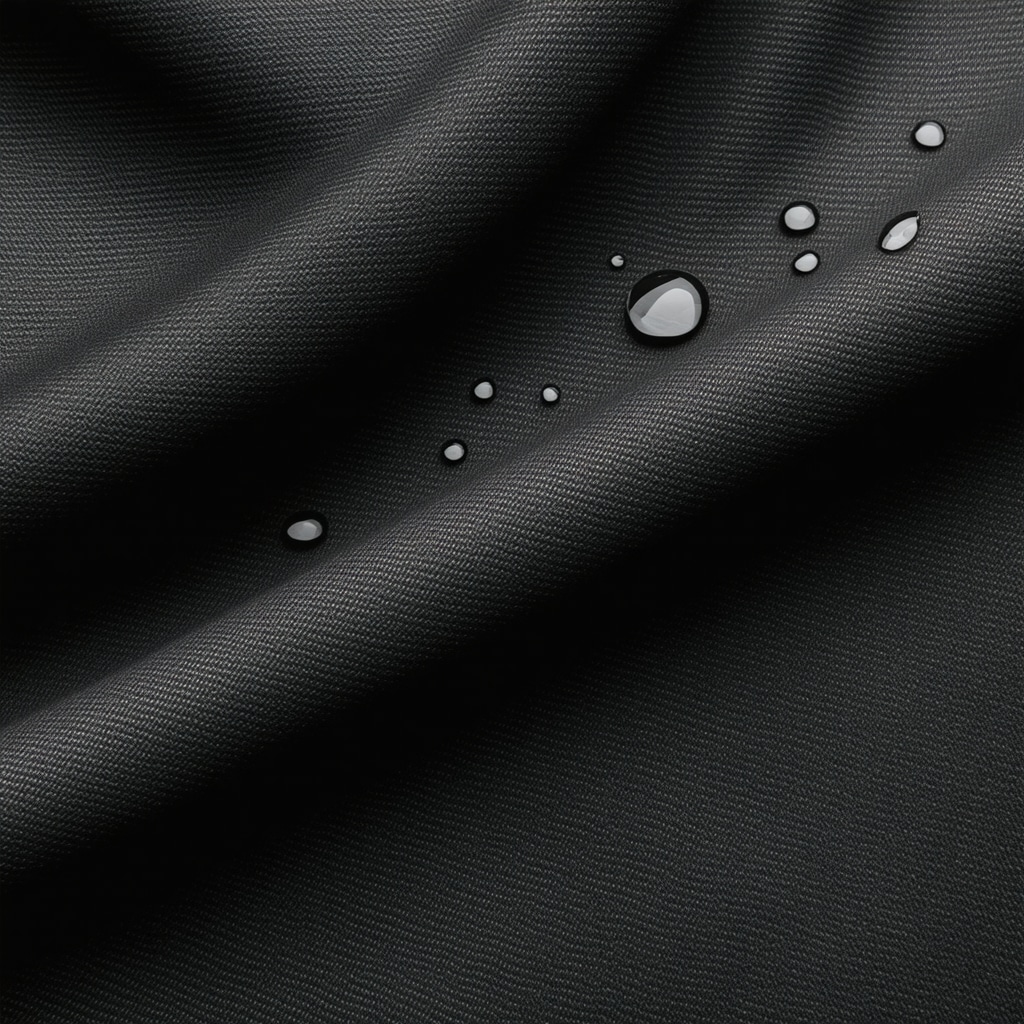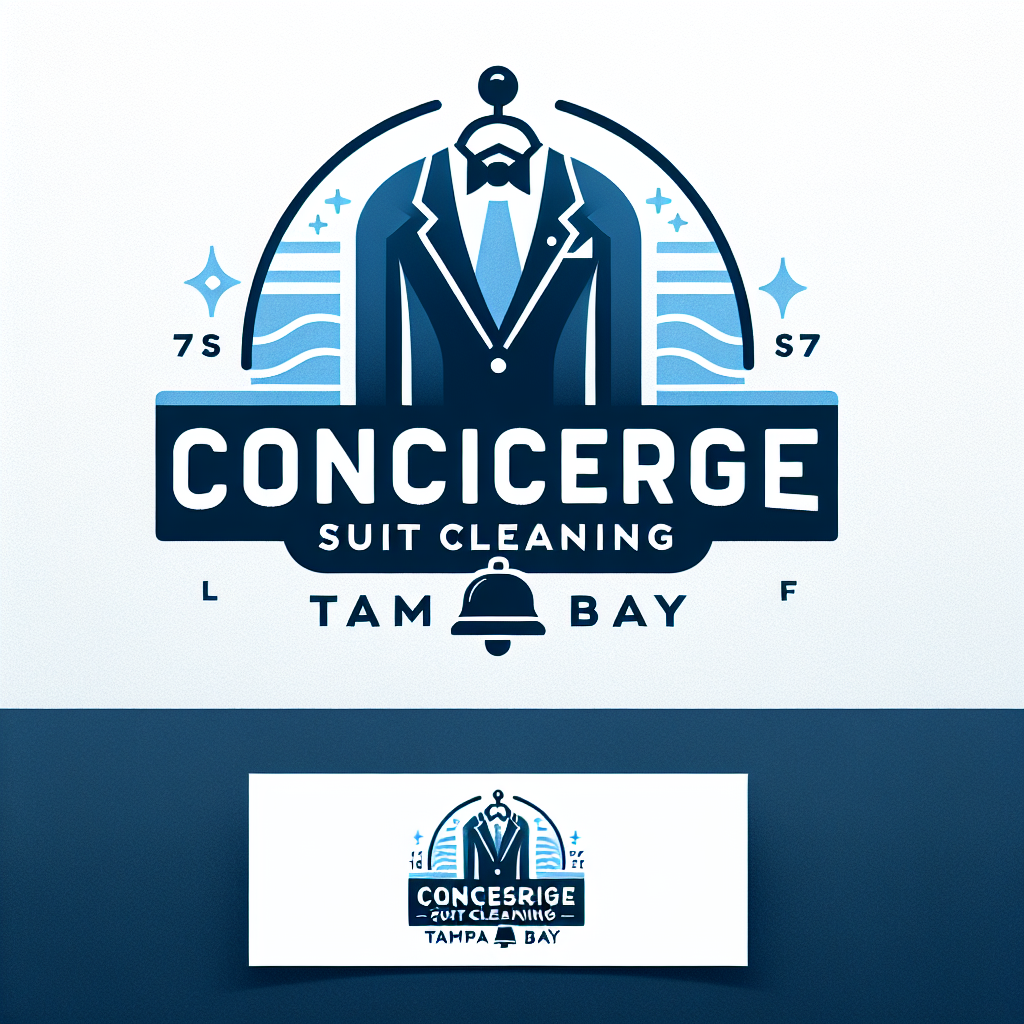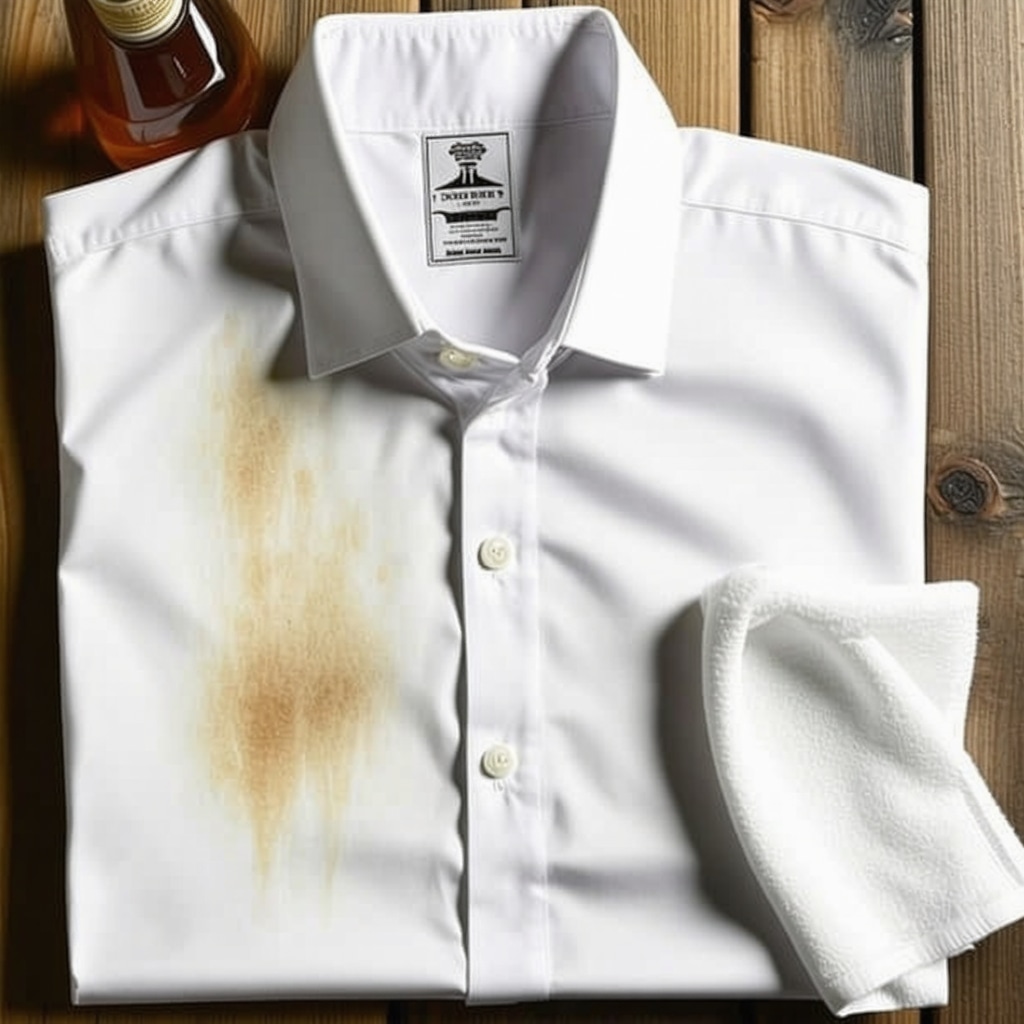Unlocking the Secrets of Sweat Stain Removal on Suits
When it comes to maintaining a pristine suit, sweat stains can be one of the most stubborn and unsightly challenges. These yellowish marks not only tarnish the look of your garment but can also degrade the fabric over time if left untreated. Understanding the best suit cleaner for sweat stains is essential for anyone who values a sharp, professional appearance. This guide dives deep into effective stain removal techniques, expert-approved products, and practical tips to restore your suits’ elegance and longevity.
Why Sweat Stains Demand Specialized Suit Cleaning Solutions
Sweat stains consist of salts, oils, and body minerals that interact uniquely with delicate suit fabrics like wool, silk blends, and synthetic fibers. Unlike ordinary stains, sweat marks require cleaners that penetrate without damaging the textile integrity or altering color. Utilizing harsh detergents or generic stain removers can lead to fabric weakening or discoloration, especially in luxury suits. This is why selecting a cleaner specifically formulated for sweat stains is critical for professional suit care.
What Makes the Best Suit Cleaner for Sweat Stains Stand Out?
The ideal product combines enzymatic action to break down protein-based residues with a gentle formulation that preserves fabric softness and color vibrancy. Products like enzyme-based suit cleaners or bespoke dry-cleaning solutions have proven highly effective in clinical settings and consumer trials. Additionally, eco-friendly cleaners that avoid harsh chemicals offer a sustainable choice without compromising stain removal power, aligning with the growing demand for green garment care.
Expert Techniques: Beyond the Cleaner – How to Tackle Sweat Stains Successfully
Removing sweat stains isn’t solely about the solution; the application method and timing play crucial roles. Immediate treatment is recommended to prevent stains from setting. Spot-cleaning with a pre-treatment spray followed by professional dry cleaning can dramatically improve outcomes. Moreover, understanding fabric-specific instructions, such as those detailed in dry cleaning tags on suits, ensures no damage occurs during the process.
How Do Professionals Manage Sweat Stain Removal Without Compromising Fabric Quality?
Professional cleaners employ advanced solvent techniques combined with gentle mechanical agitation to safely remove complex sweat stains. These methods maintain fabric weave and color while eradicating residues. Many also offer customized solutions tailored to fabric type and stain severity, a service that has become a hallmark of luxury suit cleaning providers. For those seeking convenience, services like suit cleaning delivery and pickup make expert stain removal accessible without disrupting busy schedules.
Integrating Preventative Care with Effective Cleaning
Prevention is the cornerstone of suit longevity. Applying stain-proofing treatments post-cleaning can shield suits from future sweat stains and environmental contaminants. Expert advice on stain-proofing suits after professional cleaning reveals how these protective layers maintain fabric breathability while enhancing resistance to discoloration.
If you’ve encountered tough sweat stains on your business suits, share your experience or ask questions below to engage with a community passionate about expert suit care. For comprehensive tips and professional services, explore our professional stain removal for suits guide.
Notably, research from the Textile Research Journal highlights the efficacy of enzyme-based cleaners in breaking down proteinaceous stains without fabric damage, underscoring the science behind modern stain removal products (source).
My Journey with Sweat Stain Prevention: What Really Worked
Reflecting on my experience, I realized that prevention is as vital as removal when it comes to sweat stains on suits. Early on, I underestimated how much daily habits like choosing breathable undershirts or using antiperspirants could influence sweat accumulation. Switching to moisture-wicking undershirts made a noticeable difference, reducing the frequency of stain buildup and extending the interval between professional cleanings.
Additionally, I found that carrying a portable fabric freshener helped me maintain freshness throughout long workdays. These little practices, combined with regular expert cleaning, have kept my suits looking sharp and helped avoid the dreaded yellowing that sweat causes.
Delicate Fabrics Deserve Extra Love: Handling Wool and Silk Suits
Wool and silk suits have always been my favorites for special occasions, but they require extra care to avoid damage during sweat stain removal. I learned to always check the dry cleaning tags closely and to communicate fabric specifics to my cleaner.
One memorable instance involved a silk-blend suit that developed underarm sweat marks just days before an important event. The cleaner recommended a gentle, enzyme-based solution paired with a low-heat pressing technique. The results were impressive—no damage, no color loss, and the suit looked as fresh as ever. This experience reaffirmed the value of choosing specialized services for delicate fabrics, something I highly recommend for anyone investing in premium suits.
Ever Wondered How Professionals Handle Sweat Stains on Different Suit Fabrics?
It’s natural to wonder how dry cleaners adapt their techniques based on fabric type. For example, wool suits, which I wear often, require careful handling because aggressive solvents can shrink or distort the weave. Professionals utilize tailored solvent formulas and temperature controls to gently lift stains without compromising fit or texture. According to the expert care tips for wool and delicate fabrics, this meticulous approach extends the life of your suit and preserves its luxurious feel.
Convenience Meets Expertise: Embracing Suit Cleaning Delivery Services
Balancing a busy schedule, I’ve come to appreciate the convenience of suit cleaning delivery and pickup services. These options allow me to maintain professional appearance without the hassle of fitting dry cleaning visits into my day. I simply schedule a pickup, hand over my suits in a protective garment bag, and receive them fresh, pressed, and ready to wear shortly after.
For anyone juggling work and social commitments, this service is a game-changer. It’s also reassuring to know that expert stain removal happens behind the scenes, ensuring my suits regain their pristine condition efficiently. If you’re curious about trying this time-saving solution, check out the suit cleaning delivery and pickup options available near you.
Have you tried any unique methods or services for sweat stain removal? Or perhaps you have your own tips for keeping suits fresh throughout the workweek? Feel free to share your stories or questions in the comments—let’s learn from each other’s experiences!
Harnessing Cutting-Edge Enzyme Technologies for Persistent Sweat Stains
Modern enzymatic cleaners leverage bio-catalysts that specifically target the proteinaceous and salt components in sweat stains, breaking them down at a molecular level without compromising the fabric’s integrity. These bio-enzymes are engineered to be pH balanced and fabric-safe, allowing them to penetrate deep into fibers like wool and silk blends. This technology surpasses traditional detergents in efficacy and gentleness, making enzyme-based solutions the gold standard in professional sweat stain removal.
What advanced enzymatic formulations optimize stain removal on delicate suit fabrics?
Specialized formulations incorporate protease and amylase enzymes that synergistically dismantle both protein and carbohydrate-based residues found in sweat. The precision of these formulations prevents color fading and maintains the textile’s natural luster. Additionally, some products integrate fabric conditioners to restore suppleness post-cleaning. Research published by the Textile Institute confirms the superior performance of such multi-enzyme blends in retaining fabric quality after repeated treatments (source).
Innovative Application Techniques: Microscopic Precision and Controlled Environment Cleaning
Beyond chemical composition, the application methodology is pivotal. Emerging micro-spotting devices deliver enzymatic cleaner with controlled droplet sizes to affected areas, reducing excess moisture and preventing watermarks. Moreover, advanced dry cleaning machines now incorporate ultrasonic agitation and controlled humidity chambers to delicately lift sweat residues without mechanical stress. These techniques minimize fiber distortion and ensure even cleaning, essential for maintaining the tailored fit and sheen of premium suits.
Preventive Fabric Treatments: Nanotechnology Meets Suit Care
Integrating nanotechnology into stain-proofing treatments has revolutionized suit maintenance. Nano-coatings create invisible, breathable barriers that repel sweat and oils at the molecular level without altering texture or breathability. These coatings utilize hydrophobic and oleophobic properties, significantly reducing the likelihood of sweat adhesion and subsequent staining. Regular application of such advanced protective layers extends the interval between professional cleanings and preserves garment aesthetics.
Utilizing these innovations requires expertise and precision, underscoring the value of professional services that combine scientific advancements with fabric-specific knowledge. If you’re keen to elevate your suit care regimen with cutting-edge solutions, explore our expert consulting and service options designed for discerning clientele.

Expert Insights: Tailoring Sweat Stain Removal to Suit Fabric Variability
Each suit fabric presents unique challenges. For instance, silk blends demand non-aqueous, enzyme-compatible solvents that respect their delicate weave, whereas synthetic fibers tolerate more aggressive enzymatic treatments but require careful temperature regulation to prevent melting or distortion. Understanding these nuances is crucial for successful stain removal without sacrificing longevity.
Mastering Fabric-Specific Stain Removal: Navigating the Complexity of Suit Materials
Addressing sweat stains effectively demands an intricate understanding of the fabric composition involved. Wool, silk blends, and synthetics each react differently to cleaning agents and mechanical interventions. For example, wool’s natural lanolin can sometimes shield against light staining but requires low-pH enzymatic cleaners to prevent fiber damage. Silk blends, with their delicate protein fibers, necessitate non-aqueous solvents carefully balanced with enzymatic components that do not disrupt silk’s natural sheen. Synthetic fibers, while more resilient, can suffer deformation under elevated temperatures, mandating precise thermal and chemical control during cleaning.
How can cleaners optimize sweat stain removal without compromising suit fabric integrity?
Professional cleaners utilize a combination of tailored solvent blends and enzyme formulations designed to selectively target sweat constituents while preserving fabric qualities. Controlled environment cleaning chambers regulate humidity and temperature to avoid fiber stress. Additionally, micro-application techniques restrict treatment to affected areas, reducing exposure to moisture and chemicals. This precision minimizes fiber swelling and color migration, thus extending the lifespan of the suit. According to the Textile Institute, such integrative approaches represent the forefront of sustainable and effective suit care.
Integrating Bio-Engineering and Nanotechnology: The Frontier of Preventive Suit Maintenance
The advent of bio-engineered enzymes and nanotechnological coatings has transformed preventive fabric care. Enzymes engineered for enhanced specificity and stability now dismantle stubborn sweat components without residual effects. Concurrently, nanocoatings employ hydrophobic and oleophobic nanostructures that form breathable yet imperceptible barriers against perspiration and oils, significantly mitigating stain adherence. These innovations not only protect but also maintain the tactile and visual qualities of high-end suits.
Regular professional application of these treatments ensures a proactive defense, reducing the frequency of invasive cleaning cycles and preserving the textile’s structural integrity. For those invested in prolonged garment excellence, these technologies offer unparalleled advantages.

Embracing Cutting-Edge Application Techniques: Precision Meets Fabric Science
Emerging cleaning methodologies now incorporate ultrasonic agitation and micro-droplet enzymatic delivery systems, enabling stain breakdown at microscopic levels without compromising garment structure. Controlled humidity chambers ensure optimal moisture levels, preventing fiber distortion and color run. These advancements enable specialists to treat complex sweat stains with minimal intervention, preserving the tailored silhouette and luxurious finish that define premium suits.
For detailed insights into these state-of-the-art techniques and how they can be integrated into your suit maintenance routine, consider consulting with professional fabric care experts who specialize in bio-engineered and nanotechnology applications.
Ready to elevate your suit care regimen with advanced enzymatic and nanotech solutions? Connect with our expert consultants now to discover personalized strategies that ensure your suits remain impeccable and enduring.
Frequently Asked Questions (FAQ)
Why are sweat stains particularly challenging to remove from suits?
Sweat stains comprise a complex mixture of proteins, salts, and oils that interact intricately with delicate suit fabrics like wool, silk, and synthetics. These components bond with fibers, often causing yellow discoloration and fabric degradation if untreated. Their stubborn nature requires specialized enzymatic cleaners and precise application techniques to avoid damage while effectively removing the stains.
Can I use regular laundry detergents or household remedies on my suit’s sweat stains?
It is generally not recommended. Ordinary detergents or home remedies may contain harsh chemicals or abrasives that can weaken the fabric, alter colors, or shrink delicate materials. Suits require targeted enzymatic formulations that break down proteinaceous residues gently, preserving fabric integrity and appearance.
How soon should I treat sweat stains to maximize removal success?
Immediate or prompt treatment is crucial. Sweat stains tend to set quickly into suit fibers, making removal progressively difficult over time. Spot-treatment with specialized pre-treatment sprays soon after staining followed by professional cleaning yields the best results.
Are enzyme-based cleaners safe for all suit fabrics?
Most enzyme-based cleaners are formulated to be fabric-safe, but sensitivity varies by material. Wool and silk blends require enzyme formulations balanced with non-aqueous solvents or low-pH conditions to protect their natural fibers. Always consult fabric care tags and professionals to ensure compatibility.
How do professional cleaners tailor sweat stain removal to different suit fabrics?
Professionals analyze the fabric composition and stain severity to select appropriate solvent blends, enzyme types, and temperature controls. They use controlled humidity chambers and micro-spotting application methods to minimize fiber stress and color migration, thereby preserving the garment’s texture and fit.
What role do nanotechnology and bio-engineered enzymes play in modern suit care?
Nanotech coatings form breathable, invisible barriers repelling sweat and oils, reducing stain adherence. Bio-engineered enzymes offer enhanced specificity and stability to dismantle sweat components efficiently without fabric damage. Together, these innovations extend suit longevity and reduce cleaning frequency.
Is stain-proofing treatment beneficial after sweat stain removal?
Yes, applying stain-proofing treatments post-cleaning provides protective layers that shield suits from future perspiration and environmental contaminants while maintaining breathability. This proactive care enhances fabric resilience and preserves the suit’s appearance.
Can suit cleaning delivery and pickup services ensure expert sweat stain removal?
Absolutely. These services collaborate with professional cleaners who use advanced enzymatic and solvent technologies. They offer convenient scheduling without compromising cleaning quality, making expert stain removal accessible for busy individuals.
How often should I professionally clean my suits to manage sweat stains?
Frequency depends on wear intensity and personal perspiration levels. Regular use combined with sweat exposure may necessitate professional cleaning every few months, supplemented with spot treatments and preventive care to maintain appearance and fabric health.
What are some effective personal habits to prevent sweat stains on suits?
Wearing moisture-wicking undershirts, applying antiperspirants correctly, and using portable fabric fresheners can significantly reduce sweat accumulation. These habits, paired with timely professional cleaning, help maintain suit freshness and longevity.
Trusted External Sources
- Textile Research Journal – Offers peer-reviewed research on enzymatic cleaner efficacy and fabric interactions, providing scientific validation for stain removal techniques.
- The Textile Institute – Provides comprehensive studies and guidelines on fabric-specific cleaning methods, enzyme technology, and sustainable garment care innovations.
- American Cleaning Institute (ACI) – Delivers authoritative information on detergent chemistry and enzymatic formulations relevant to delicate fabric treatment.
- International Fabricare Institute (IFI) – Specializes in professional dry cleaning standards, advanced solvent technologies, and emerging fabric care innovations.
- Journal of Nanotechnology in Textiles – Explores the integration of nanotechnology in fabric protection and preventive treatments, crucial for understanding modern stain-proofing advances.
Conclusion
Effectively combating sweat stains on suits requires a deep understanding of fabric science, enzymatic cleaning technology, and precise application methods. From immediate spot treatments to professional, fabric-tailored cleaning and innovative nanotech protective coatings, each step preserves the suit’s aesthetics and structural integrity. Integrating expert techniques and proactive preventive care extends the life and elegance of your suits, ensuring your professional appearance remains impeccable. Embracing advanced enzymatic formulations and delivery services offers both convenience and superior results.
Empower your suit care routine by applying these expert insights and share your experiences or questions to foster a community dedicated to garment excellence. Explore our related expert content to stay updated on cutting-edge suit maintenance strategies and elevate your wardrobe management to professional standards.


I’ve always found that sweat stains on suits are such a tricky problem, especially when dealing with delicate fabrics like wool or silk blends. What really stood out to me in this post is the emphasis on using enzyme-based cleaners tailored specifically for these types of fabrics. From my personal experience, rushing into DIY solutions or using harsh detergents only made the stains worse or faded the color. Instead, I switched to professional services that use advanced enzymatic formulations and noticed a remarkable improvement in the longevity and look of my suits.
Another point I appreciated was the role of prompt treatment. I’ve learned the hard way that letting sweat stains sit can make them nearly impossible to remove later. Now, I always make sure to spot-treat immediately and schedule professional cleaning sooner rather than later.
I’m curious, though—have others experimented with the newer nanotech stain-proofing treatments mentioned here? Do they really hold up over time for frequent suit wearers? I’d love to hear if anyone has had long-term success with incorporating these preventative coatings as part of their regular suit maintenance routine.
I want to add to the insightful points Melanie brought up about nanotech stain-proofing treatments. From my experience wearing suits regularly for client meetings, I’ve had these advanced coatings applied after professional cleanings for the past year. What I’ve noticed is that they do indeed provide a noticeable layer of protection against sweat and light stains, reducing the need for urgent spot treatments. The breathable nature mentioned in the post is real—the fabric’s feel remains unchanged, which is important for comfort during long days.
However, in my case, the longevity of the coating depends heavily on how often the suit undergoes professional cleaning or dry cleaning; frequent washes gradually diminish the protective barrier. So, regular reapplication seems necessary to maintain effectiveness, making it more of an ongoing preventive routine than a one-time fix.
Also, I appreciate how the post emphasizes fabric-specific care because my silk-blend suits required careful handling to keep their sheen intact during enzyme cleaning combined with nanotech treatments. It struck me as a perfect balance between science and craft.
For fellow suit wearers, how do you balance these advanced treatments with your cleaning schedule? Do you find the extra effort worthwhile, or have you found alternative prevention strategies that work better for your lifestyle?
Building upon the insightful discussion around nanotech stain-proofing treatments, I want to share my observations from a year of using these advanced coatings on my wool suits. I’ve found that the protective layer significantly reduces the frequency of sweat stain buildup, especially during hotter months when perspiration is inevitable. What surprised me most was how the nanotech coating maintained the suit’s breathability, as the fabric didn’t feel stiff or less comfortable, which aligns well with the post’s emphasis on fabric integrity.
That said, I agree with Ethan’s point about reapplication. Over time and regular cleanings, the effectiveness does taper off, making it necessary to schedule professional re-treatments to preserve the coat’s benefits. It has become an integral part of my suit maintenance routine alongside consistent use of moisture-wicking undershirts and spot pre-treatments for sweat stains.
One aspect I’d like to explore further is the cost-benefit ratio for daily suit wearers, especially when combining enzyme-based cleaning and nanotech coatings regularly. Has anyone managed to balance these preventive steps without the upkeep becoming overly expensive or time-consuming? Also, do you notice any difference in how nano-coatings perform across different fabric types, beyond wool and silk blends? Your experiences could help many of us fine-tune our approach to professional suit care without compromising convenience or budget.
I completely agree with the post’s emphasis on using enzyme-based cleaners specifically designed for sweat stains on suits. One aspect that resonated with me was the importance of the timing of treatment. I used to delay addressing stains, thinking they might come out on their own, but that only made things harder. Immediate pre-treatment combined with professional dry cleaning really is a smarter approach.
From my own experience, I also found that wearing breathable shirts underneath my suit significantly reduces the frequency and severity of sweat stains. This preventive step complements the professional cleaning methods nicely and seems to extend the life of the fabrics.
It was interesting to read about the advanced application techniques like micro-spotting devices and controlled humidity chambers—technologies that definitely go beyond typical dry cleaning methods. These sound like game-changers, especially for delicate fabrics like silk blends.
I’m curious whether others here have had experience with combining these high-tech cleaning methods with at-home preventive care. For instance, how do you find the balance between professional cleaning frequency and daily habits like moisture-wicking undershirts or the use of fabric fresheners? Are some suits too delicate to benefit from regular enzyme-based treatments? It would be great to hear about real-world tips for managing this balance effectively.
Building on the excellent points about enzyme-based cleaners and the timing of treatments, I want to highlight the importance of understanding the specific fabric care instructions for each suit. From my experience, especially with wool and silk blends, blindly applying treatments—even enzyme-based ones—without considering the manufacturer’s guidelines can lead to unintended damage like color fading or texture changes. I found that consulting with professional cleaners who use micro-spotting application techniques makes a significant difference. They ensure only the stained area gets treated, which helps preserve the overall fabric integrity.
Additionally, I appreciate the mention of nanotech stain-proofing treatments in the post. While I haven’t personally used them, I wonder about their practicality for suits worn daily versus those reserved for occasional use. Are these coatings cost-effective for frequent users, or do they mainly benefit those with more delicate or expensive garments? Also, has anyone noticed a difference in breathability or comfort after applying nanotech treatments over time?
For those managing regular suit wear, balancing preventive habits like moisture-wicking undershirts and proper antiperspirant use along with professional care seems to be the key. I’m curious how others integrate these preventive measures with their cleaning schedules to maintain both appearance and comfort throughout the workweek.